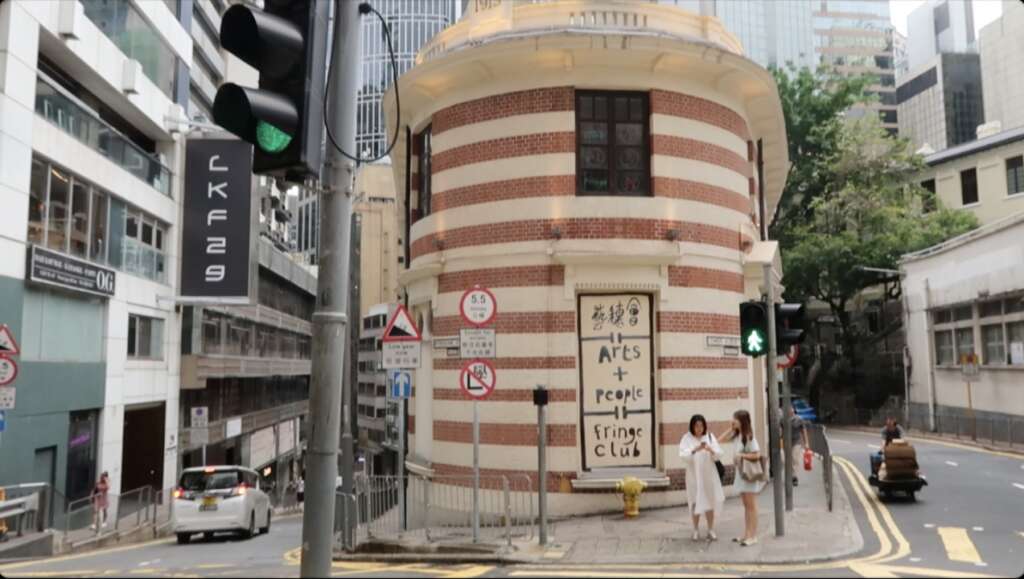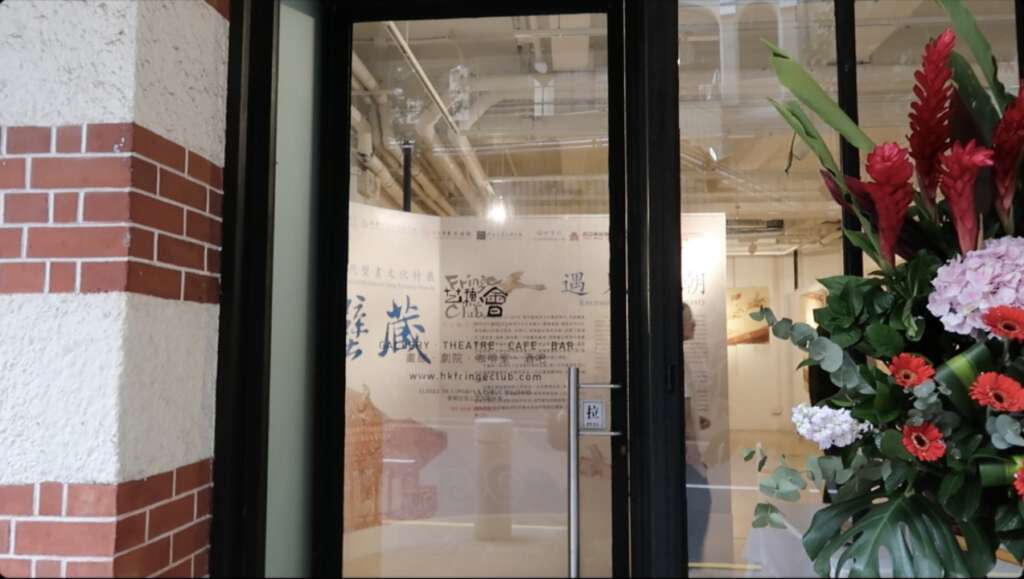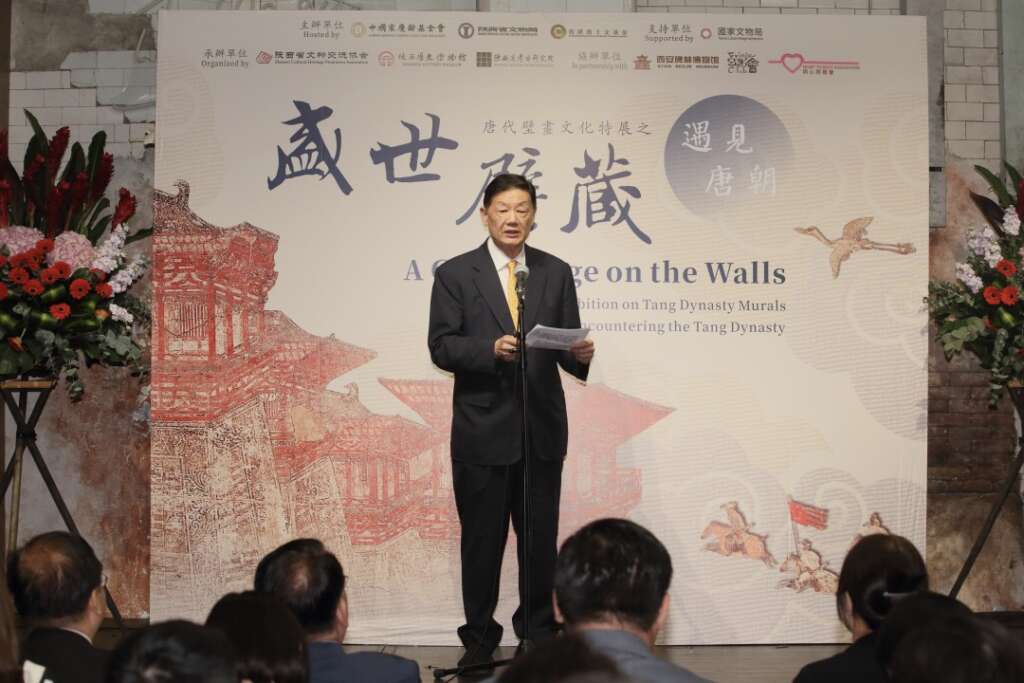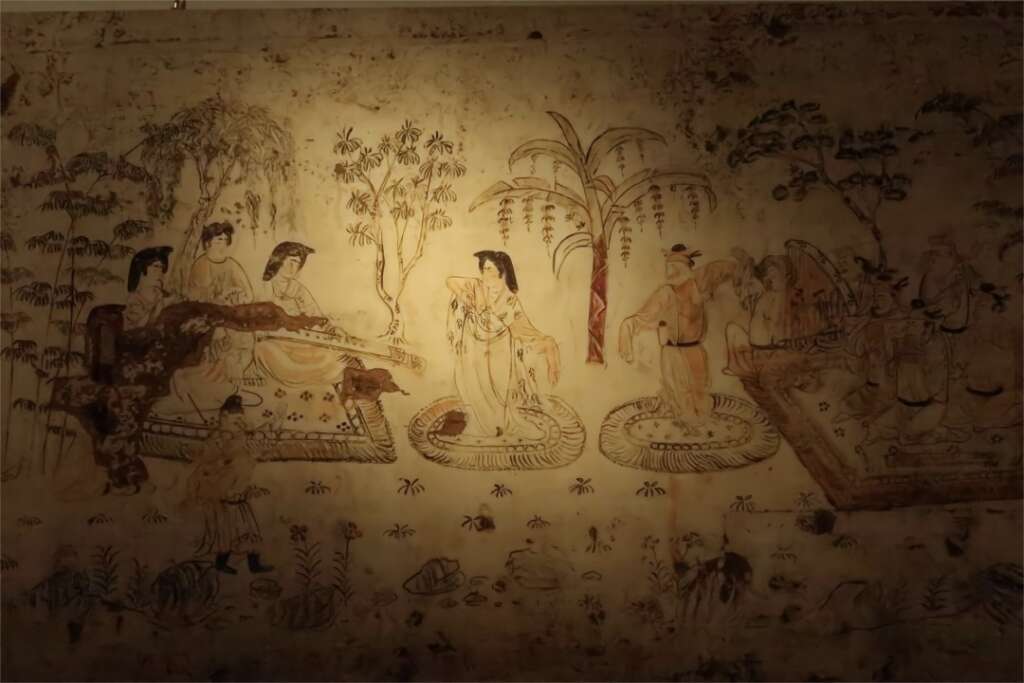As I walk up Wyndham Street in Central on the last day of April, the iconic red brick building of the Fringe Club catches my eye: and the display seen through the glass differs from the modern art panels more commonly seen there.

I push open the door to Anita Chan Lai-ling Gallery and it’s as if I’ve been transported back to the Tang Dynasty(618-907)more than 1,300 years ago – every wall of the gallery is covered in warmly coloured Tang Dynasty murals, not dug up from tombs over a thousand years old, but images scanned by archaeologists using modern equipment and high-tech materials. Not only have these images fully restored the original colours of the murals, but the cracks on the surface of the murals are clearly visible as I look closer.

The exhibition is not large and features replicas of images from Tang Dynasty mausoleums, rather than originals, but visitors are given a hi-tech path to get the feel of the actual artefacts.
In one of the exhibition halls, with the help of the staff, I put on VR goggles and, by controlling the joystick in my hand, I was able to ‘travel freely’ around the mausoleum.
Through the VR googles, I saw the interior of the mausoleum is well laid out and lavishly decorated. However, as I was carefully examining a crane decoration on the dome, suddenly a wrong touch immediately led me to a green and vast grassland – I realised that where I was now was the outside of the mausoleum. In front of me was a beautiful view of the sunset – the skyline of the grassland in the distance was glowing with a rose-golden light, and the magnificent cream-coloured building opposite the setting sun was the famous ‘Tomb of Prince Zhang Huai'(章懷太子墓).

Here is a special exhibition “A Golden Age on the Walls: Encountering the Tang Dynasty– Special Exhibition on Tang Dynasty Murals” opened at the Hong Kong Fringe Club, Central, shed new light on people’s vibrant lifestyle in the Tang Dynasty by featuring dozens of valuable murals from Tang royal mausoleums, which recall the heyday of Chinese history.
Professor Herman Hu Shao-ming, Founding President of Hong Kong Rosamond Foundation, and founder of Friday Culture, attended the opening ceremony and delivered a speech.

Professor Hu said he was very pleased to bring the world’s unique Tang tomb paintings to Hong Kong so that Hong Kong citizens can feel the charm of Shaanxi’s historical and cultural heritage, and get to know the achievements of the Chinese nation’s profound civilisation and cultural connotations from close up and from different perspectives, which will help promote Hong Kong young people’s national and cultural identity and enhance their cultural self-confidence, so that Hong Kong can join hands with the country to build a brighter future.
The exhibition is jointly hosted by China Soong Ching Ling Foundation, Shaanxi Provincial Cultural Heritage Administration and Hong Kong Rosamond Foundation Company Limited.
The murals on display are important for the study of the culture, dress and life of the Tang people for future generations.

Polo, for example, the favourite sport of the Tang aristocracy, not only embodies the love of horses inherent in the Xianbei(鮮卑) bloodline, but also testifies to the Tang men’s pursuit of strength, courage and masculinity.

In the Tang Dynasty, women were not only keen on elegant shirts, dresses and hair ornaments, but “women dressed as men” became a unique fashion, especially common during the Emperor Wu Zetian period, when women’s status was unprecedentedly high.

As the world’s largest international metropolis at the time, Chang’an(長安, present-day Xi’an) attracted merchants, musicians and dancers from all over the world. Nourished by the diverse cultures and a strong socio-economic base, the musical art of the Tang Empire reached an unparalleled level of development. From the murals on display, we can see that musical instruments from the West, such as the Pipa (琵琶), were already widely used in the artistic life of the Tang people.
“Harmony in diversity” is the social and cultural characteristic of the Tang Empire, more than 1,300 years ago, as well as Hong Kong’s attitude towards world culture today. On this level, the exhibition of Tang Dynasty murals in Hong Kong is more like a dialogue between the ancient and the modern, coinciding over a millennium.
All images by Emily Zhou.


